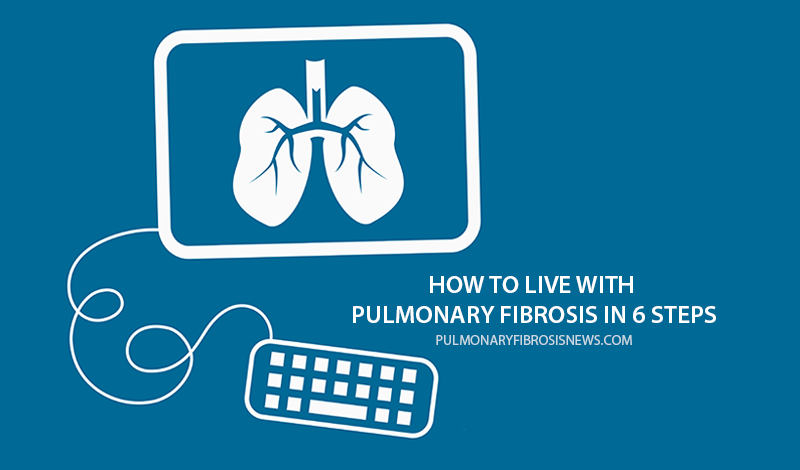How to Live with Pulmonary Fibrosis in Six Steps

1. Find Information About Pulmonary Fibrosis
It’s normal for patients to be overwhelmed by a diagnosis of pulmonary fibrosis (PF). PF is a respiratory disease that causes scarring or fibrosis in the lung tissue, and in most cases the causes are not fully understood. Being a rare condition, it’s likely that patients have never heard of it. Therefore, physicians will explain what pulmonary fibrosis is and how the disease works, while organizations such as the Pulmonary Fibrosis Foundation (PFF) can also help with that.
Discover more here.
2. Seek Different Options of Treatment
For a long time, patients diagnosed with PF didn’t have treatment options tailored directly for their disease and had to try different therapies to find out what could be helpful. However, the U.S. Food and Drug Administration (FDA) has recently approved two drugs for the treatment of idiopathic pulmonary fibrosis (IPF). However, each case is different and patients should discuss with their physician any side effects, improvements or drawbacks related to each therapy.
Discover more here.
3. Consider Joining a Clinical Trial
While there are already FDA-approved treatment options for patients with pulmonary fibrosis, there is still no cure for the disease. Therefore, investigators continue to work to find new ways of improving treatment, increasing patients’ quality of life and ultimately finding a cure for the disease. Participating in a clinical trial can help patients get more effective treatment, at reduced costs, while helping advance the field and fight the disease.
Discover more here.
4. Maintain Overall Health
If a patient suffers from a chronic disease, this does not mean that patients should neglect their overall health. It is important that patients focus on their treatment for PF as well as maintain healthy habits. Adopting a healthy diet, exercising regularly and avoiding risk behaviors including smoking or drinking alcohol are determinant ways to maintaining overall health.
Discover more here.
5. Do Not Neglect Specialized Medical Care
Pulmonary fibrosis can be severe, and it is important for patients to find specialized medical care and reduce the chances of exacerbations. “The PFF has assembled a list of medical centers that have specific expertise in the treatment of pulmonary fibrosis (PF). This compilation is based on our experience in working with leading medical centers around the United States to fund research and improve patient care,” explain the Pulmonary Fibrosis Foundation (PFF).
Discover more here.
6. Find Emotional Support
The physical symptoms of pulmonary fibrosis are not the only ones, and both patients and loved ones usually suffer the emotional burden of the disease as well. However, there is no reason for people to go through this process alone. A support group or network can be found at a specialized medical center, through an organization or online, and patients or loved ones can share their doubts and experiences with others going through the same process.
Discover more here.
Learn more about pulmonary fibrosis: https://bit.ly/1VElTQA
Pulmonary Fibrosis News is strictly a news and information website about the disease. It does not provide medical advice, diagnosis or treatment. This content is not intended to be a substitute for professional medical advice, diagnosis, or treatment. Always seek the advice of your physician or other qualified health provider with any questions you may have regarding a medical condition. Never disregard professional medical advice or delay in seeking it because of something you have read on this website.






